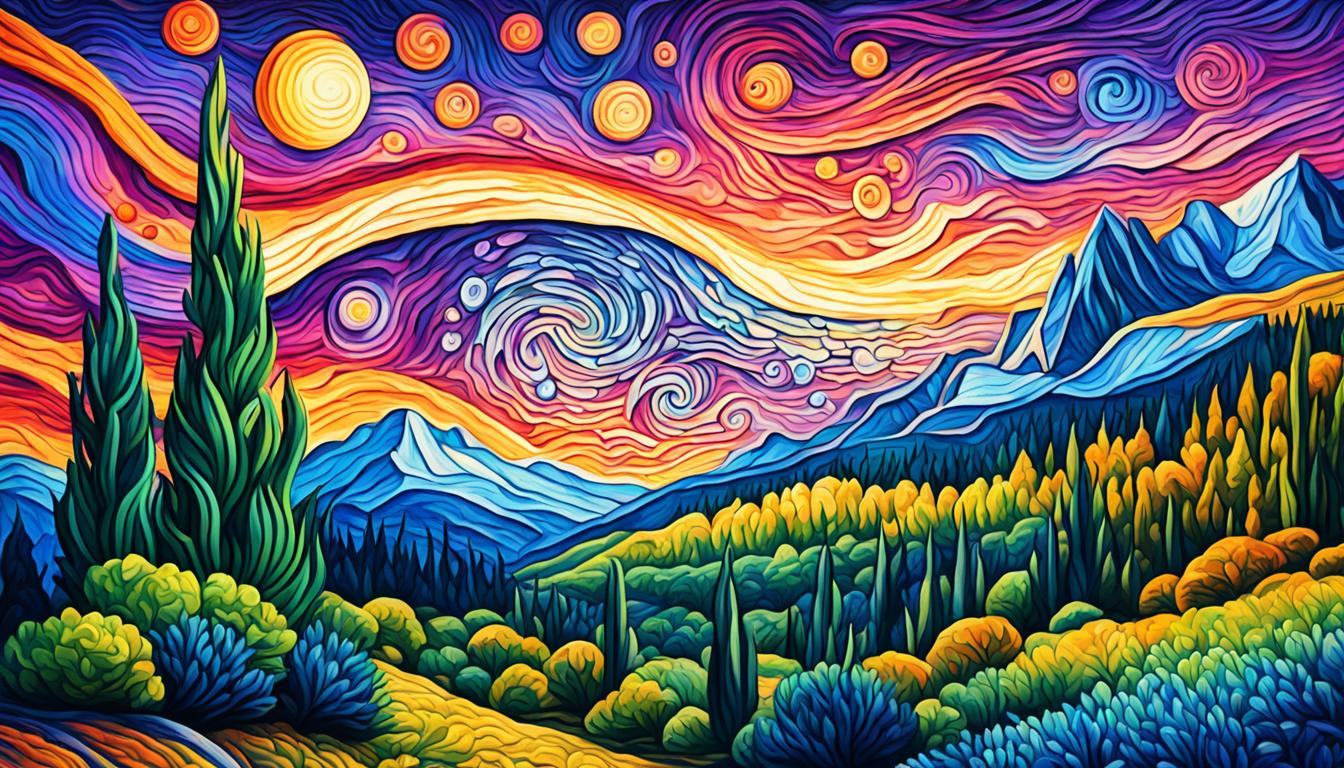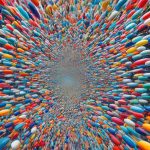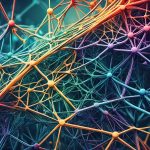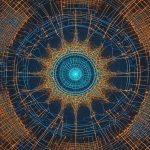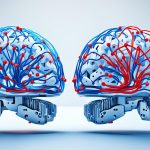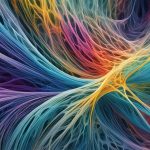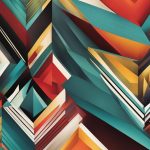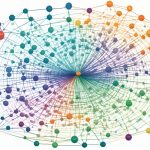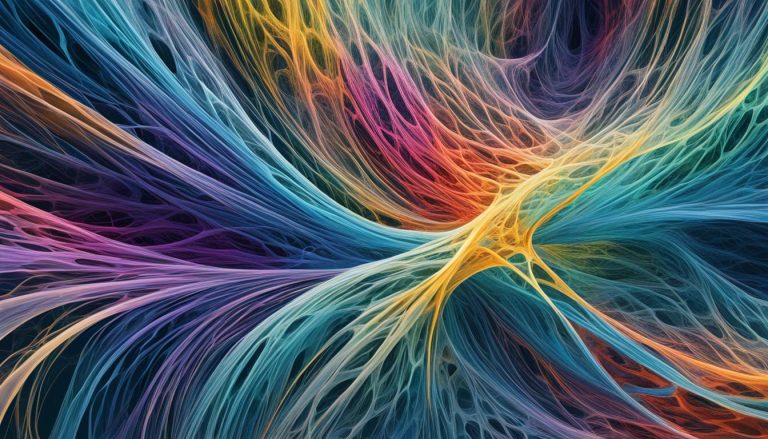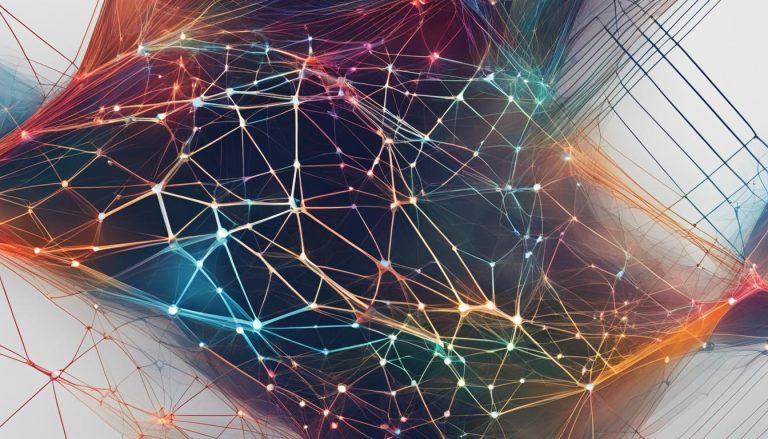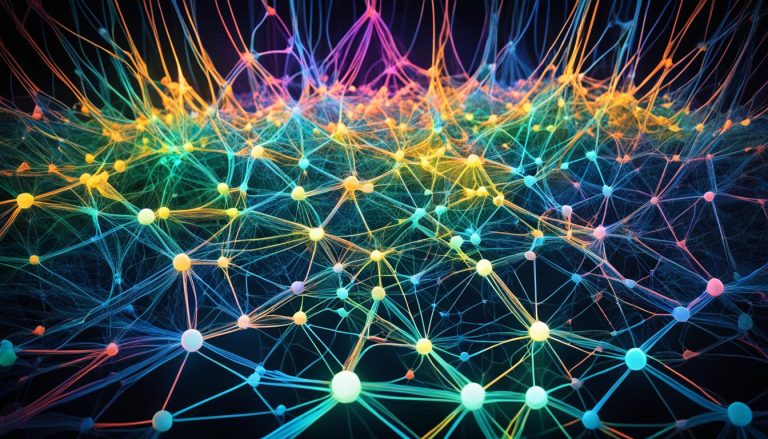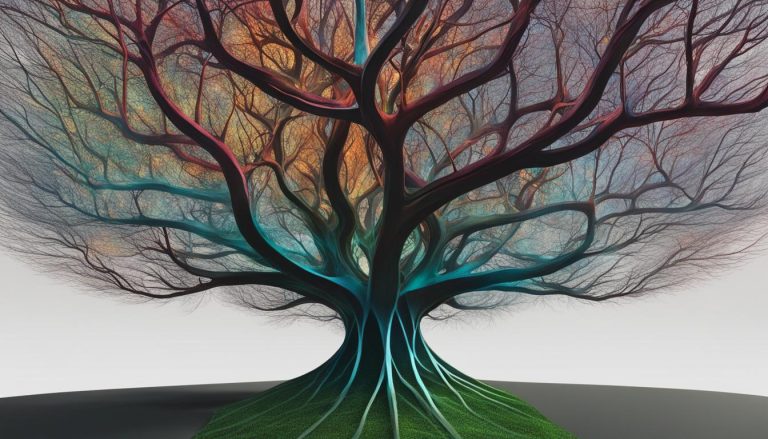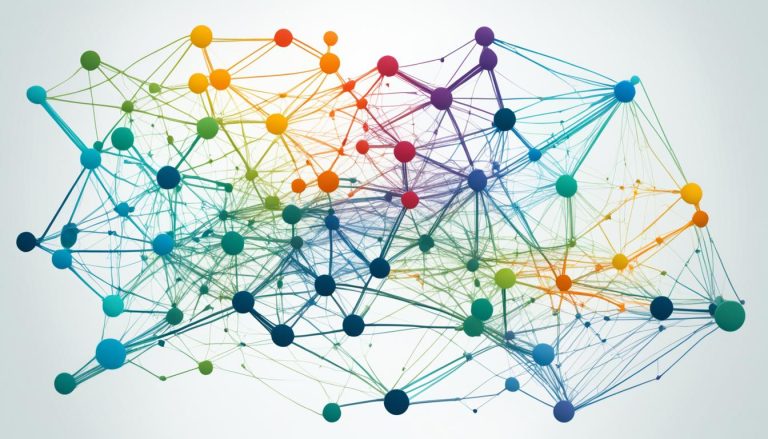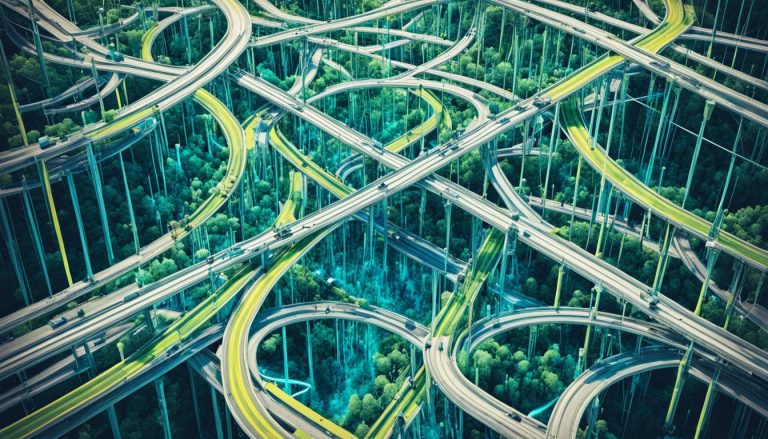Neural style transfer (NST) is a fascinating technique that combines the fields of art and science, bringing together advanced AI algorithms with creative aesthetics. It offers a unique way to blend the style of one image with the content of another, resulting in visually stunning and captivating digital artworks.
With neural style transfer, artists can explore new frontiers of digital aesthetics, creating artworks that seamlessly merge different artistic styles and visual elements. This powerful technology leverages the capabilities of deep neural networks to analyze and extract features from images, enabling the transformation of ordinary photographs into breathtaking pieces of digital art.
In this article, we will delve into the intricacies of neural style transfer, understanding how it works and the innovative applications it offers across various industries. We will also explore advanced techniques that push the boundaries of creativity and discuss the future of art and technology in the context of neural style transfer.
Through a fusion of art and science, neural style transfer opens up a world of possibilities for artists, designers, and creative professionals. Join us as we embark on a journey that explores the seamless blend of technology and creativity, and discover how neural style transfer is revolutionizing the field of digital aesthetics.
Understanding Neural Style Transfer
Neural Style Transfer (NST) is a fascinating technique that combines the power of convolutional neural networks (CNNs) with the art of transferring styles from one image to another. To grasp the concept of NST, it is crucial to understand the role of CNNs in feature extraction.
CNNs are deep learning architectures that process visual information in a feed-forward manner. They consist of multiple layers, each containing filters that extract different features, known as feature maps. These networks capture information at different levels of abstraction, enabling the extraction of intricate details as well as basic pixel-level information.
Deeper layers of CNNs excel at capturing higher-level features, such as complex textures and object classes. On the other hand, shallower layers focus on capturing simpler, pixel-level information. This multi-level feature extraction is crucial for the successful implementation of neural style transfer.
When performing neural style transfer, a key step is selecting a convolutional layer in the middle or higher layers of the CNN to represent the content. This layer plays a significant role in extracting features that reflect the essence of the content image. By leveraging these features, NST algorithms can generate an image that closely resembles the content, while incorporating the style elements from a separate style image.
Feature Extraction in Convolutional Neural Networks
Feature extraction is the foundation of neural style transfer. Let’s take a closer look at how CNNs achieve this:
- Each layer in a CNN applies a set of filters to the input image.
- These filters convolve with the input to produce activation maps, which highlight regions of interest.
- As the input traverses through subsequent layers, the CNN gradually learns to recognize more complex features.
- Convolutional layers closer to the output capture high-level concepts and semantic information.
- Feature maps from these intermediate layers serve as the basis for neural style transfer.
Understanding the intricacies of feature extraction in CNNs provides valuable insights into the inner workings of neural style transfer. This knowledge empowers artists, researchers, and technologists to push the boundaries of creativity and leverage this powerful technique to its full potential.
| Convolutional Neural Networks (CNNs) | Feature Extraction |
|---|---|
| CNNs are deep learning architectures that excel at processing visual information. | Feature extraction involves the use of filters to extract meaningful information at various levels of abstraction. |
| They consist of layers that convolve filters with the input to produce activation maps. | Convolutional layers closer to the output capture higher-level features and semantic information. |
| CNNs play a crucial role in the success of neural style transfer. | Understanding feature extraction in CNNs enables the generation of visually stunning style transfers. |
The Process of Neural Style Transfer
The process of neural style transfer involves optimizing the input image to minimize the loss between the input and the content image and the input and the style image. This creative technique merges the worlds of AI and digital aesthetics to produce visually stunning and unique artworks.
Early neural style transfer (NST) methods treated it as an optimization problem, requiring hundreds or thousands of iterations to achieve the desired style transfer. Instead of adjusting the weights of the neural network, the optimization process focuses on modifying the pixel values of a randomly initialized input image.
The objective of the optimization process is to find the optimal combination of pixel values that minimize the overall cost function. The loss function plays a crucial role in this process, quantifying the difference between the input image and the desired content and style images. By minimizing this loss, the generated image gradually adopts the style of the style image while preserving the content of the content image.
Neural style transfer involves balancing the content and style components to create visually appealing and harmonious images. The optimization process iteratively adjusts the pixel values, resulting in a gradual transformation that captures the essence of both the content and style images.
The process of neural style transfer can be broken down into the following steps:
- Initialization: A random noise image or the content image is used as the initial input.
- Forward Propagation: The input image is passed through a pre-trained convolutional neural network (CNN) to extract feature maps at various layers.
- Loss Calculation: The content loss and style loss are calculated by comparing the feature maps of the input image with the content and style images, respectively.
- Backward Propagation: The gradients of the loss with respect to the input image are computed, allowing for updates to the pixel values.
- Optimization: The pixel values are adjusted to minimize the loss, iteratively refining the image until the desired style transfer is achieved.
This iterative optimization process requires careful fine-tuning of hyperparameters such as the learning rate and the balance between content and style weights. Through experimentation and iteration, artists and researchers can achieve impressive results, creating captivating visuals that blend the characteristics of different artistic styles with the content of real-world images.
Benefits of the Optimization Process
The optimization process used in neural style transfer offers several advantages:
- Flexibility: By adjusting the loss function and hyperparameters, artists can create a wide range of styles and effects, enabling endless creative possibilities.
- Realistic Output: The optimization process allows for the generation of images that seamlessly combine the style of one image with the content of another, resulting in visually appealing and realistic compositions.
- Efficiency: Compared to traditional style transfer methods, which involve manual editing or labor-intensive techniques, neural style transfer provides a more efficient and automated way to achieve artistic effects.
The optimization process is a fundamental component of neural style transfer, making it a powerful tool for artists, designers, and researchers alike. By leveraging the capabilities of deep learning and AI algorithms, this process unlocks new avenues for innovation in digital aesthetics and pushes the boundaries of visual creativity.
| Advantages of the Optimization Process |
|---|
| Flexibility |
| Realistic Output |
| Efficiency |
Note: The advantages listed above highlight the key benefits of the optimization process in neural style transfer.
Applications of Neural Style Transfer
Neural style transfer, with its ability to blend the style of one image with the content of another, has found wide-ranging applications across various industries. This innovative technique has revolutionized the fields of scene rendering, graphic design, film, and animation, offering new possibilities for creativity and visual expression.
Scene Rendering
In the film industry, neural style transfer plays a crucial role in scene rendering. By transforming real scenes into animation styles, filmmakers can create captivating visual experiences that transport audiences into fantastical worlds. This technique not only brings artistic vision to life but also reduces labor costs by minimizing the need for labor-intensive manual animation processes.
Graphic Design
The field of graphic design has embraced neural style transfer as a powerful tool for creating unique visual styles. Designers can now explore countless possibilities in digital aesthetics by infusing their designs with the essence of various art movements, epochs, or even iconic works of art. This application of neural style transfer opens up new horizons for graphic designers to push creative boundaries and deliver visually captivating designs.
Film and Animation
Beyond scene rendering, neural style transfer has found extensive use in the film and animation industries. Film directors and animators can utilize this technique to infuse their projects with distinct visual styles that enhance storytelling and create immersive experiences. By applying neural style transfer, they can seamlessly merge different genres, eras, or techniques to evoke specific emotions and capture the essence of their narratives.
Moreover, neural style transfer has potential applications in fields such as medicine, criminal investigation, scientific research, architecture, music, and literature. Its flexibility and versatility make it a valuable tool for professionals across diverse domains, expanding the possibilities of how neural style transfer can redefine various creative endeavors.
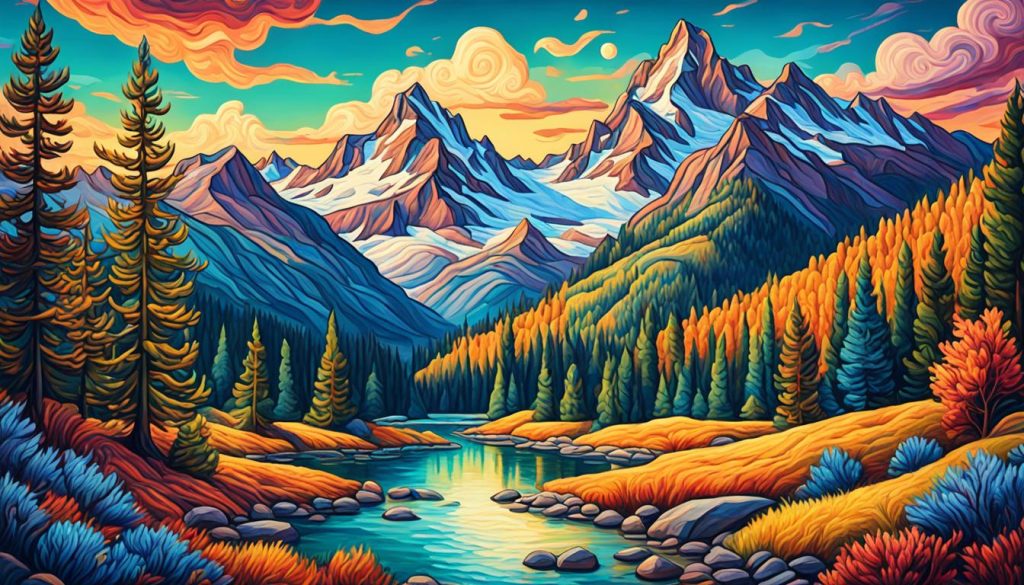
Advanced Techniques in Neural Style Transfer
Neural style transfer has evolved beyond its basic form, offering advanced techniques that open up new possibilities for creativity and artistic expression. These techniques leverage the power of AI and machine learning to enhance the style transfer process, allowing artists and designers to achieve even more impressive results.
Mixing Multiple Styles: One of the advanced techniques in neural style transfer is the ability to mix multiple styles together. Instead of being limited to a single style, artists can now combine different artistic influences to create unique combinations. By blending the characteristics of multiple styles, artists can produce artworks that are truly one-of-a-kind.
Fine-tuning the Level of Abstraction: Another powerful technique in neural style transfer is the ability to fine-tune the level of abstraction in the transferred image. Artists can control the amount of detail and complexity in the final artwork, allowing for a customizable range of styles. This technique gives artists greater control over the artistic vision and aesthetic of their creations.
Combining with Other AI Technologies: Neural style transfer can also be combined with other AI-driven technologies to enhance creativity. By integrating neural style transfer with techniques such as generative adversarial networks (GANs) or image inpainting, artists can unlock even more innovative possibilities. This fusion of AI technologies creates a synergy that pushes the boundaries of artistic expression.
Advanced techniques in neural style transfer, such as mixing multiple styles and fine-tuning the level of abstraction, offer greater freedom and innovation to artists and designers. By combining neural style transfer with other AI-driven technologies, the potential for creating unique artworks is expanded. These advanced techniques enable artists to explore new frontiers in the intersection of art and technology.
Examples of Advanced Techniques in Neural Style Transfer:
Let’s take a look at how these advanced techniques can be applied:
- Combining the bold brushstrokes of Van Gogh with the vibrant colors of Monet to create a masterpiece that showcases the best of both styles.
- Fine-tuning the level of abstraction in a landscape photograph to transform it into a dreamy, impressionistic artwork.
- Integrating neural style transfer with image inpainting to seamlessly merge different elements from various styles into a cohesive composition.
Advanced Techniques in Neural Style Transfer Comparison:
| Technique | Description |
|---|---|
| Mixing Multiple Styles | Blending characteristics from multiple artistic styles to create unique combinations. |
| Fine-tuning the Level of Abstraction | Controlling the amount of detail and complexity in the transferred image. |
| Combining with Other AI Technologies | Integrating neural style transfer with other AI-driven techniques for enhanced creativity. |
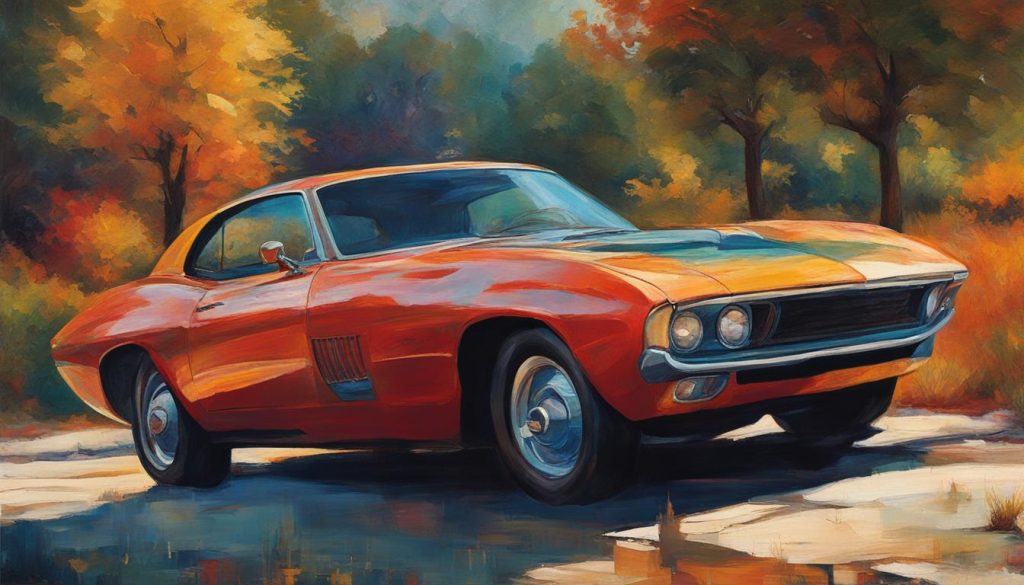
With these advanced techniques in neural style transfer, artists and designers can unleash their creativity and redefine the boundaries of digital aesthetics. By pushing the limits of what is possible, neural style transfer continues to shape the future of art and technology.
Conclusion
Neural style transfer has brought together the worlds of art and technology, creating a powerful tool for creativity and expression. By merging AI algorithms with artistic aesthetics, this technique has opened up new possibilities for artists and designers alike. As neural style transfer continues to advance and evolve, it holds immense potential for driving innovation in various industries, pushing the boundaries of art and technology.
The future of art and technology looks promising with the integration of neural style transfer. This technique has the potential to redefine computer vision, offering a fresh approach to visual content creation. By unleashing the power of imagination, artists can now transform mundane images into stunning masterpieces. Additionally, the fusion of neural style transfer with other AI technologies promises even more groundbreaking applications in fields such as fashion, advertising, and entertainment.
With neural style transfer, the creative landscape is undergoing a transformation. Artists can now explore new artistic possibilities, experiment with different styles, and seamlessly blend genres. This revolution in digital aesthetics allows for the creation of unique and engaging visual experiences that captivate audiences. As we look to the future, neural style transfer is set to become an integral part of the art and technology landscape, shaping the way we perceive and interact with visual content.
FAQ
What is neural style transfer?
Neural style transfer is a technique that utilizes deep neural networks to blend the style of one image with the content of another, combining the fields of art and science.
How does neural style transfer work?
Neural style transfer is based on the use of convolutional neural networks (CNNs) to extract features from images. It involves optimizing the input image to minimize the loss between the input and the content image and the input and the style image.
What are the applications of neural style transfer?
Neural style transfer has a wide range of applications across various industries including the film industry for scene rendering, graphic design for creating unique visual styles, and fields such as medicine, criminal investigation, scientific research, architecture, music, and literature.
Are there advanced techniques in neural style transfer?
Yes, advanced techniques in neural style transfer include mixing multiple styles to create unique combinations, fine-tuning the level of abstraction in the transferred image, and combining neural style transfer with other AI-driven technologies for enhanced creativity.
What is the future of neural style transfer?
Neural style transfer represents the intersection of art and technology, offering new possibilities for creativity and artistic expression. As the field continues to advance, it holds great potential for driving innovation in various industries and pushing the boundaries of art and technology.

